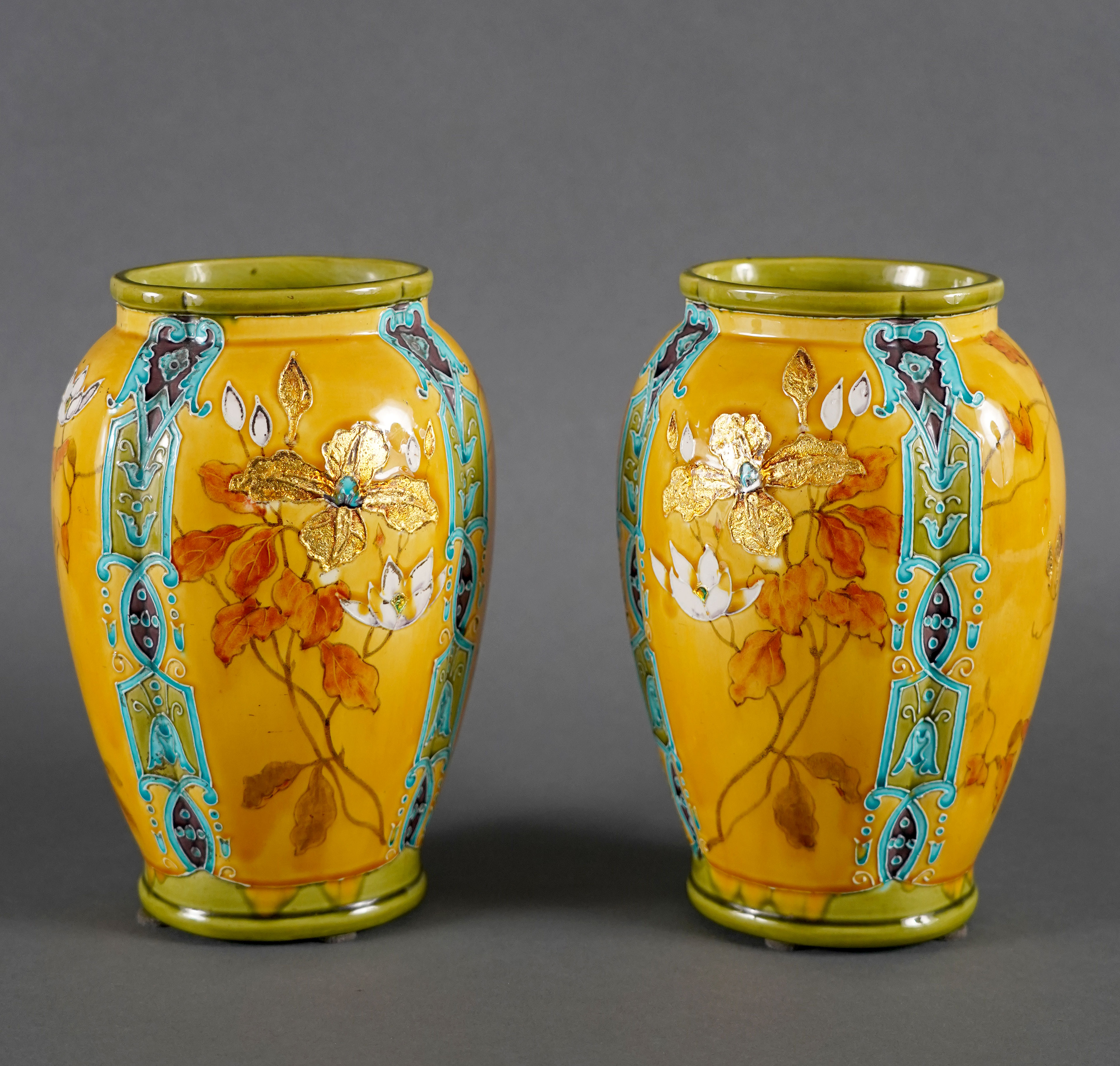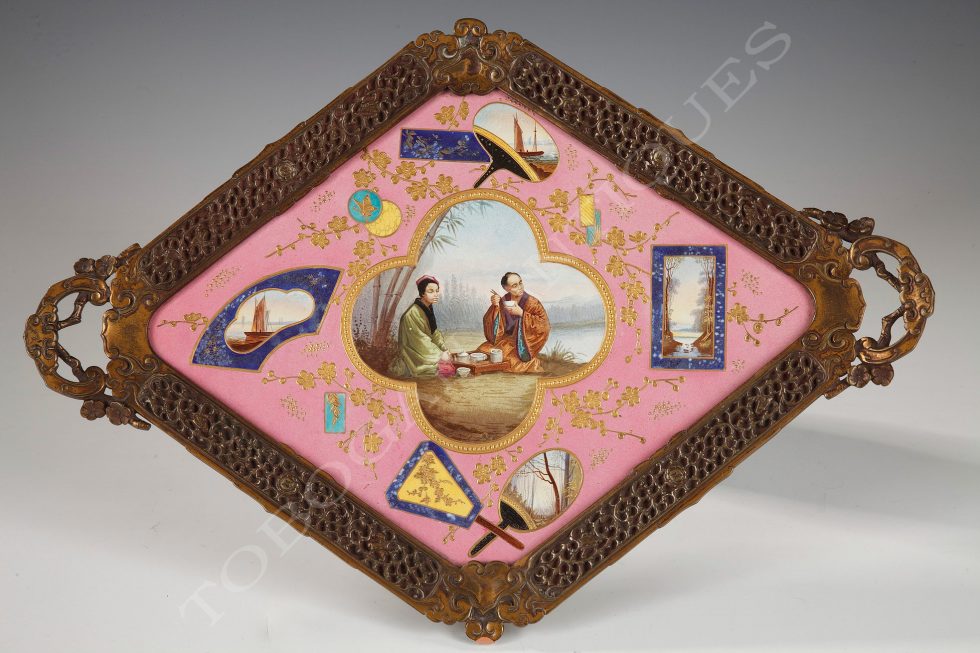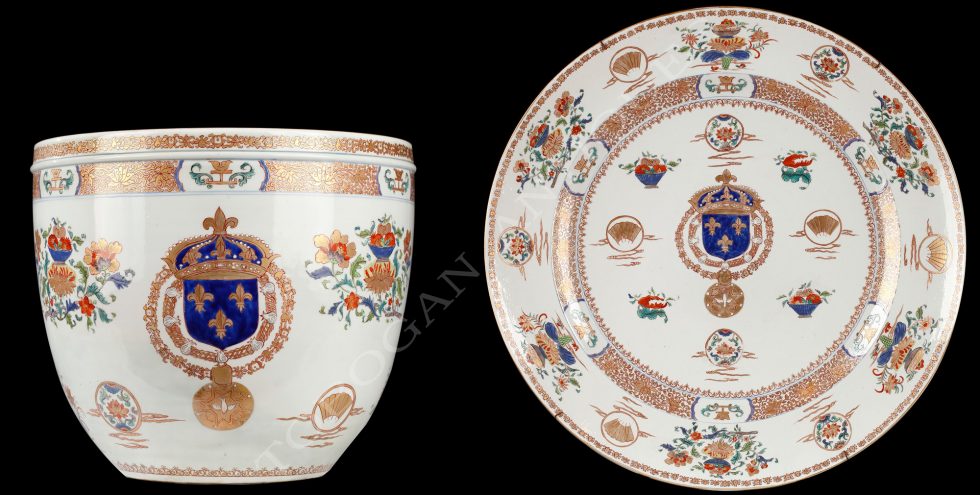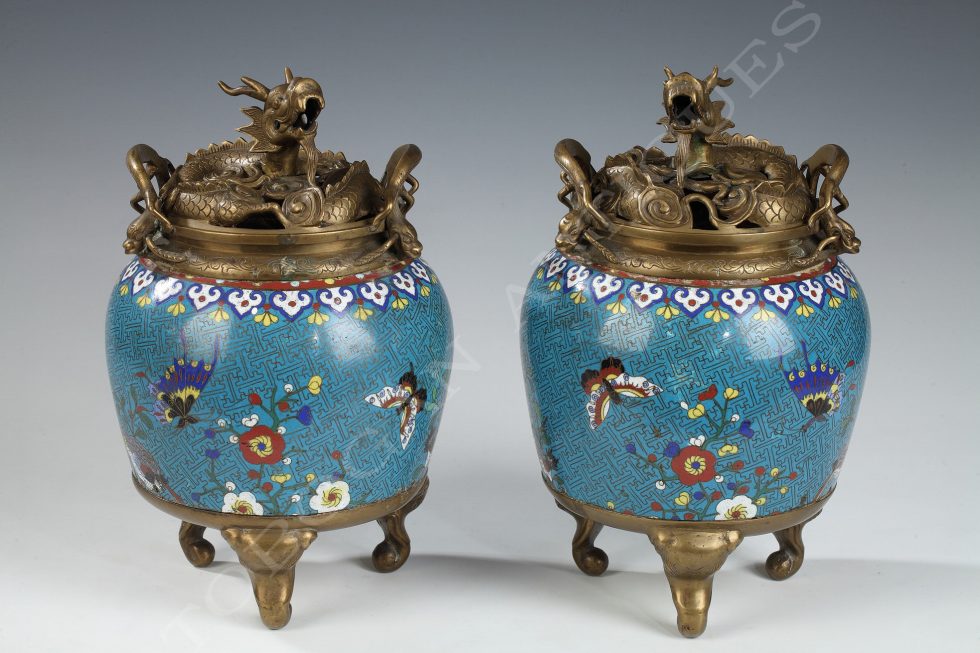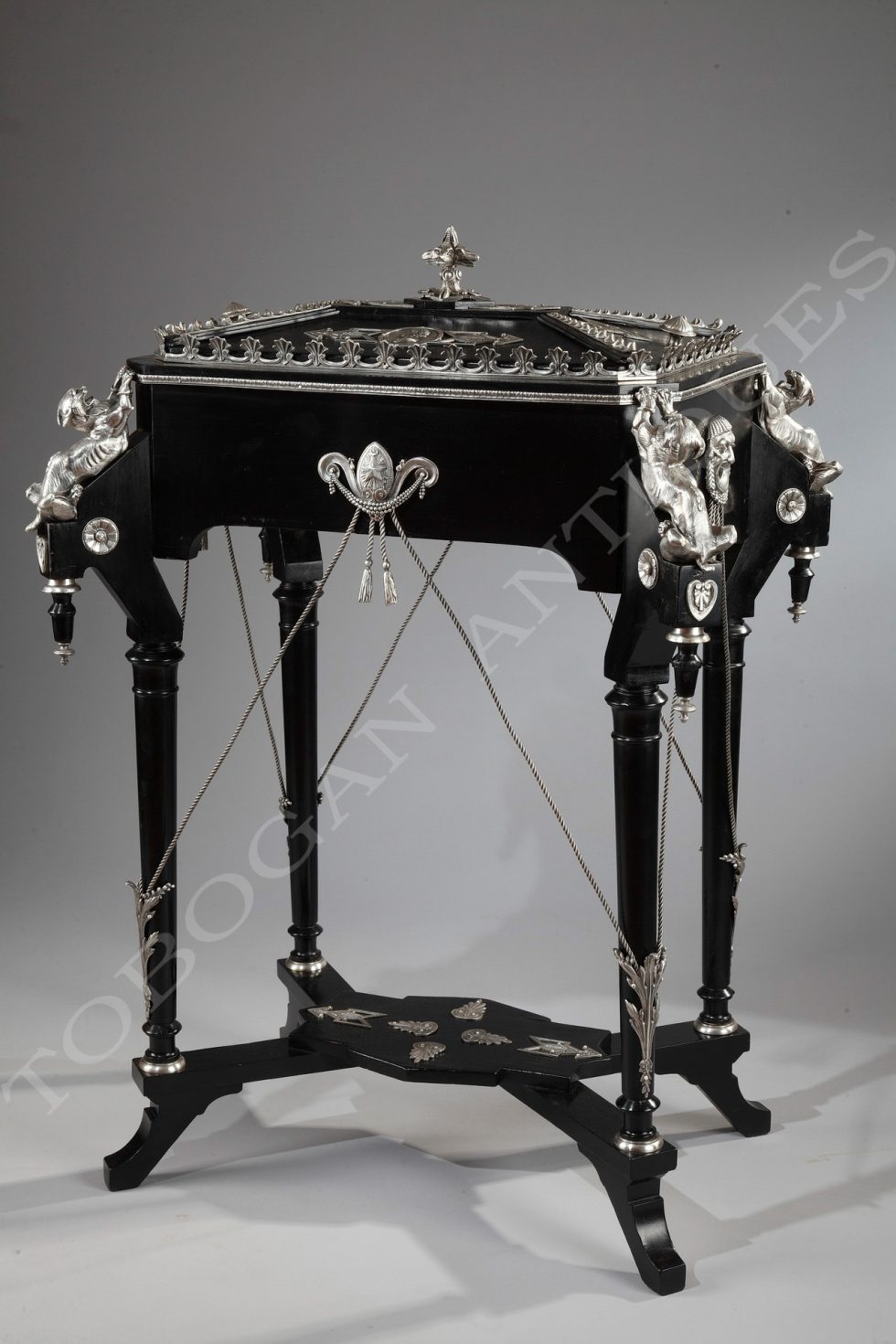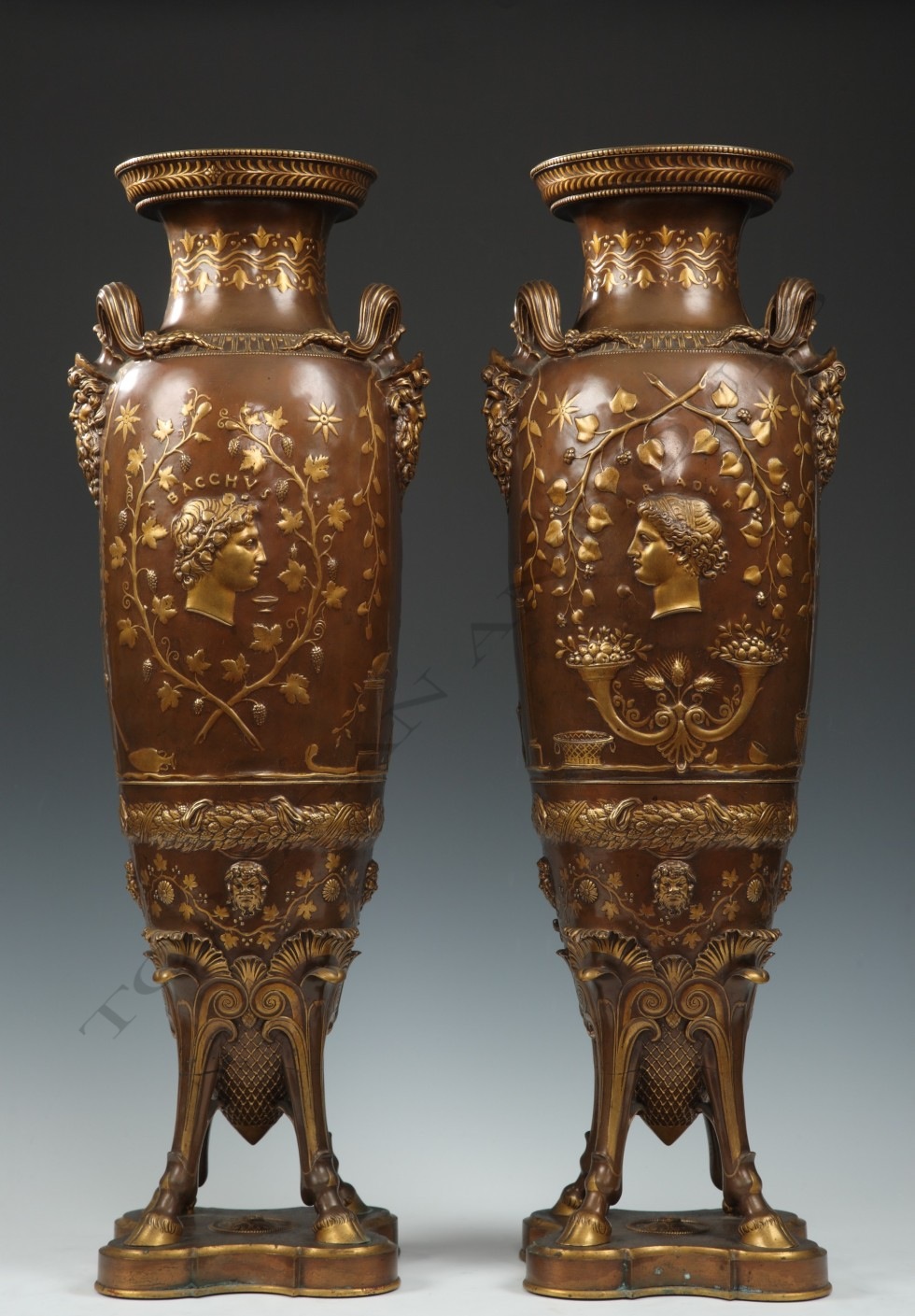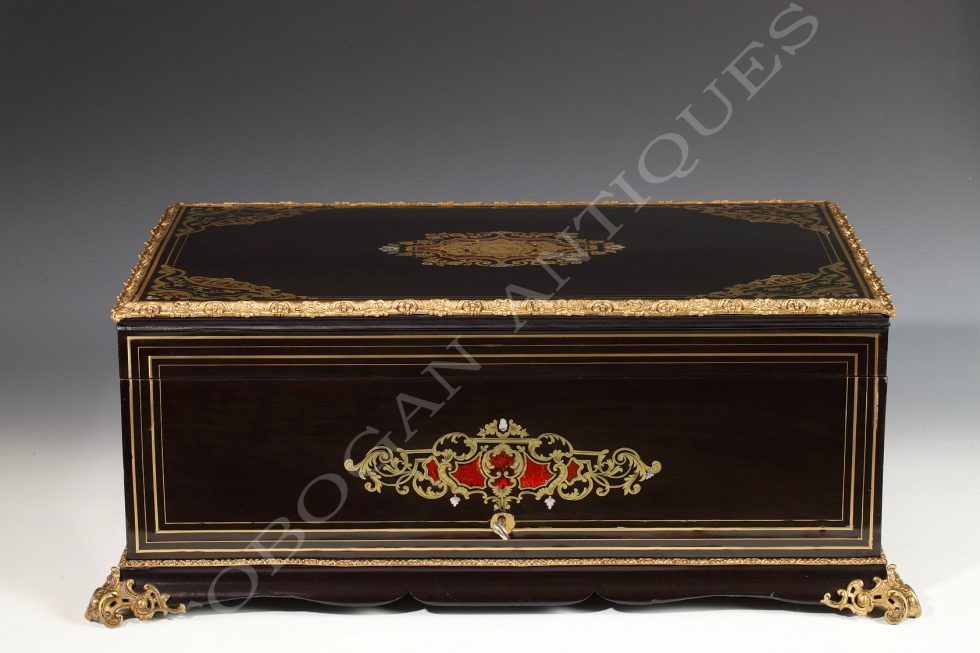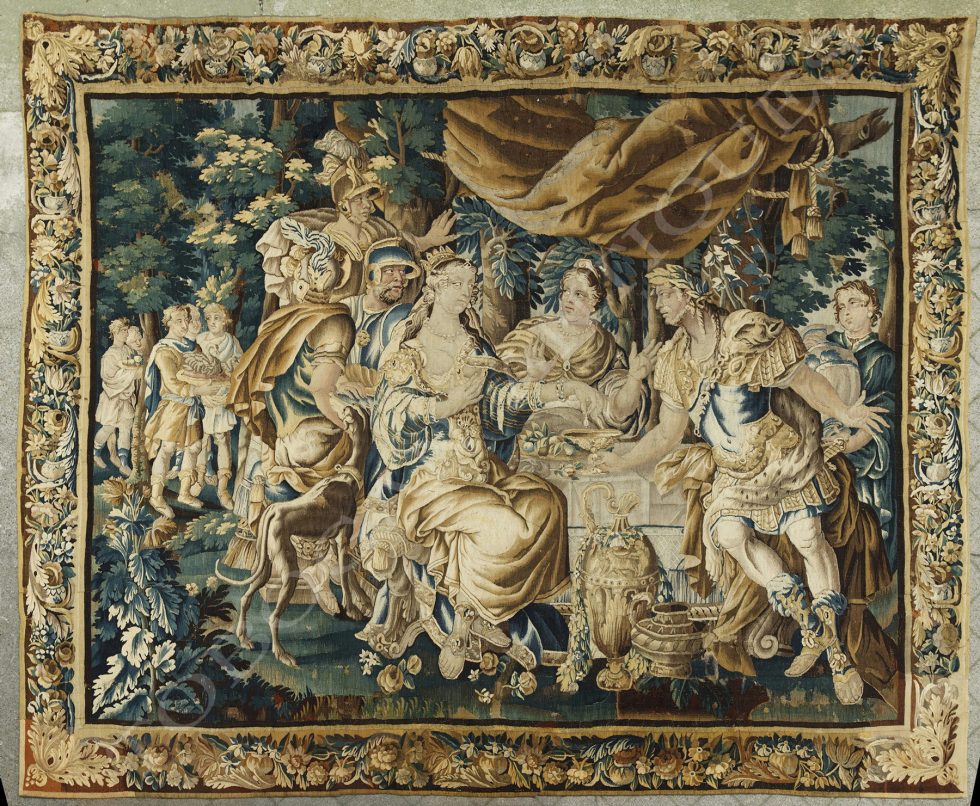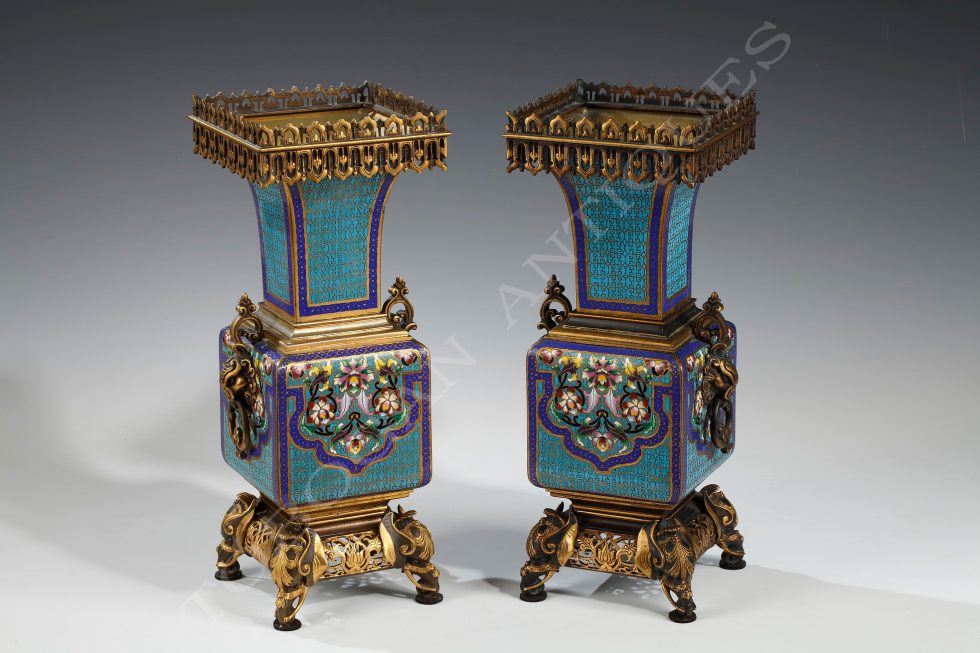Ref. 1852
GIEN
Earthenware Manufacture
T. DECK
Ceramist
(1823-1891)
(In the Style of)
Pair of Vases with Bouquets
France
Circa 1880
Earthenware, Gold-leaf
Engraved Gien
Height : 24 cm (9,4 in.) ; Width : 15 cm (5,9 in.) ; Depth : 13 cm (5,1 in.)
A charming pair of polychrome earthenware vases with gold-leaf interleaving, a technique in which Théodore Deck had become a specialist.
These oblong-shaped vases are decorated on each side with bouquets of iris and cyclamen on an orange-brown ground, separated by a frieze of interlaced stylized foliage in Deck blue.
biographies
In 1821, English industrialist Thomas Edme Hulm, known as “Hall”, after selling the Montereau factory, which had been run by his family since 1774, acquired the land and buildings of the former Minimes convent in Gien to set up a new English-style earthenware factory, which would later become world-renowned. The company soon ran into financial difficulties and changed hands several times between 1826 and 1862. In 1866, a new partner, Jean-Félix Bapterosses, recently acquired by the former Faïencerie de Briare, brought new capital to the company. The company finally took the name “Faïencerie de Gien” in 1875, when it became a société anonyme. Production, initially focused on utility crockery, shifted to tableware, decorative pieces and services bearing the coat of arms of the great families, calling on the skills of highly talented ceramists. The peak of Gien’s earthenware production occurred between 1855 and 1900, during the period of the famous Universal Exhibitions, at which they won numerous awards.
The renowned ceramist Théodore Deck, born in Guebwiller in 1823, made his apprenticeship in the Hügelin earthenware factory in Strasbourg. After a European tour of initiation he arrived in Paris in 1847. He made his first public appearance in 1861 at the Parisian Arts and Industry Salon where he won a silver medal for the works he exhibited. His reputation thus assured, Deck became profoundly influenced by the Japanese style, which was very fashionable at the time. He adopted the naturalistic oriental motifs with great precision. Emile Reiber (1826-1893) chief designer for Christofle, also made sketches for Deck. The fame he merited through long hours of work was assured by his success at Universal Exhibitions in which he participated: Vienna in 1873 where all his rivals were left far behind; Paris in 1878 where he won the Grand Prize for his portraits on gold backgrounds. Showered with praise by the critics at the Central Union of Decorative Arts Exhibition in 1874, the “Gazette des Beaux Arts” (Paris,1874, vol. XXXV, p. 310) reported that « Mr. Deck, master of masters is the greatest glory of French ceramics ». His life was devoted to the amelioration of earthenware technology by a succession of achievements. He thus improved the rending of colours, one of which, a new turquoise blue, became known as « Bleu de Deck ». Theodore Deck had talent and he knew it. He did not keep it to himself however, but shared it with others and helped to promote young artists who lacked means. He thus became an example for the renaissance of ceramic art during the second half of the 19th Century. All his techniques were made public and circulated in a book on earthenware. His Genius recognized and promoted to the grade of “Officier de la Légion d’honneur” he was nominated director of the Sèvres Porcelain Factory in 1887.
Contact us
Tobogan Newsletter
If you want to be up-to-date with our new acquirings you can sign up to our newsletter.

